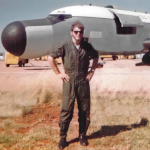
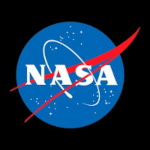

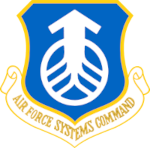
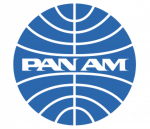
Apollo/Range Instrumentation Aircraft Support of Apollo 17
Michael Zeitfuss - ARIA Communications System Engineer - Pan American World Airways - Aerospace Services Division
Summary
Apollo 17 (Figure 1) was the final manned lunar landing mission of the United States National Aeronautics and Space Administration (NASA) Apollo program. There were several unique characteristics of the Apollo 17 mission. (1) Apollo 17 was the first and only nighttime liftoff of the Saturn V launch vehicle (Figure 1). (2) Apollo 17 was the only mission to have a launch delay caused by an equipment malfunction of the Saturn V rocket (two-hour and forty-minute delay). (3) The trans-lunar injection (TLI) burn for Apollo 17 was the latest of the nine manned lunar missions occurring at 3:18:37 GET (all other Apollo lunar missions were 2:18 to 2:56 hr: min GET). (4) Apollo 17 was the only Atlantic area TLI; the other eight Apollo lunar missions had TLI in the Pacific.
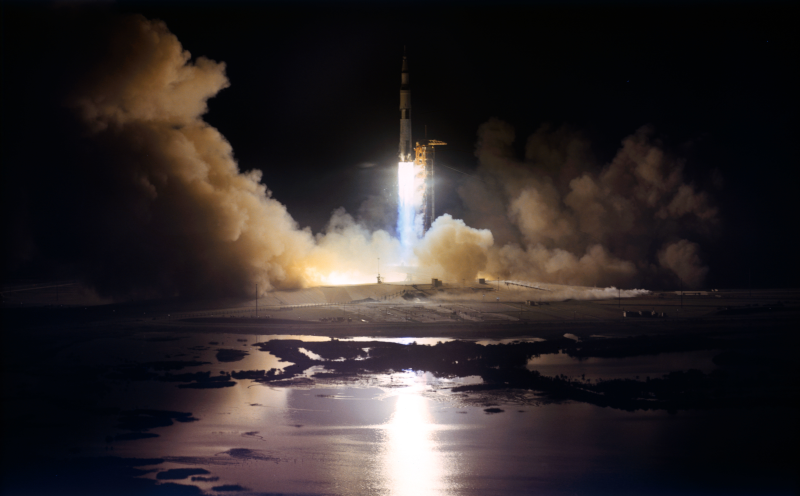
Figure 1: The huge, 363-feet tall Apollo 17 (Spacecraft 114/Lunar Module 12/Saturn 512) space vehicle was launched from Pad A, Launch Complex 39, Kennedy Space Center (KSC), Florida, at 12:33 a.m. (EST) on December 7, 1972. Flames from the five F-1 engines of the Apollo/Saturn first stage developed 7.5 million pounds of thrust and brilliantly illuminated the nighttime launch area. Aboard the Apollo 17 spacecraft were astronaut Eugene A. Cernan, commander; astronaut Ronald E. Evans, command module pilot; and scientist-astronaut Harrison H. Schmitt, lunar module pilot (official NASA photo)
The ARIA requirements for Apollo 17 were to provide telemetry and voice relay coverage during two of the critical phases of the mission, trans-lunar injection (TLI) burn and reentry. The TLI coverage requirement was from 1 minute prior to start of Trans-lunar injection (TLI) burn to 1 minute after burn shutdown for all launch azimuths between 72 degrees and 108 degrees.
The reentry requirements were to provide coverage from earth interface (defined by NASA as 400k ft altitude) minus 1 minute to communications blackout and then exit blackout to splashdown, with continuing coverage after splashdown until released by NASA.
Pre-mission analyses of the Apollo 17 trajectory showed that five ARIA would be required in order to fully meet the TLI coverage requirements for the Saturn V launch azimuths of 72-100 degrees (reduced from 108 because of the weight of the Lunar Rover).
ARIA’s #1 and #2 were planned to support the Apollo 17 TLI if the launch occurred at the original planned time of 0253Z/7December at an azimuth of 72 degrees... However, because of the launch delay of 2+40 and the ten minute shift in the time of TLI burn, #1 and #2 provided orbital pass support and #3 and #4 provided TLI coverage of the actual launch azimuth of 95.5 degrees. All telemetry data recording and astronaut voice relay requirements were fully met for the TLI burn period. After mission support all five ARIA returned to PAFB arriving either 7 or 8 December 1972.
Pre-mission analysis of the Apollo 17 lunar return reentry trajectory showed that three ARIA would be required to meet the data and voice relay requirements. ARIA’s #3 and #4 departed PAFB on 10December 1972 arriving Fiji Islands on 13 December. ARIA #2 departed PAFB on 11 December and arrived at Hickam AFB on 13 December.
ARIA#2 provided coverage from earth interface (400K ft) to enter blackout, ARIA #3 provided coverage from exit blackout to near splashdown, and ARIA #4 provided overlapping coverage with ARIA #3 to splashdown support until release by NASA. All telemetry and voice relay requirements were met for reentry. Splashdown occurred at 19:24:59Z/ 19December 1972.
ARIA #2 staged and recovered to Hickam AFB. Luna samples and astronaut bio-material was transferred to ARIA #2 at Hickam and then these samples were flown to Ellington AFB outside of Houston for transfer to NASA. ARIA #3 & #4 staged and recovered Nanda. By 22Dec 1972 all three of the ARIA that had supported reentry had recovered to Patrick AFB.
Thus ended the United States manned lunar landing program. The eight ARIA had successfully provided telemetry and astronaut voice relay coverage for all of the Apollo missions.